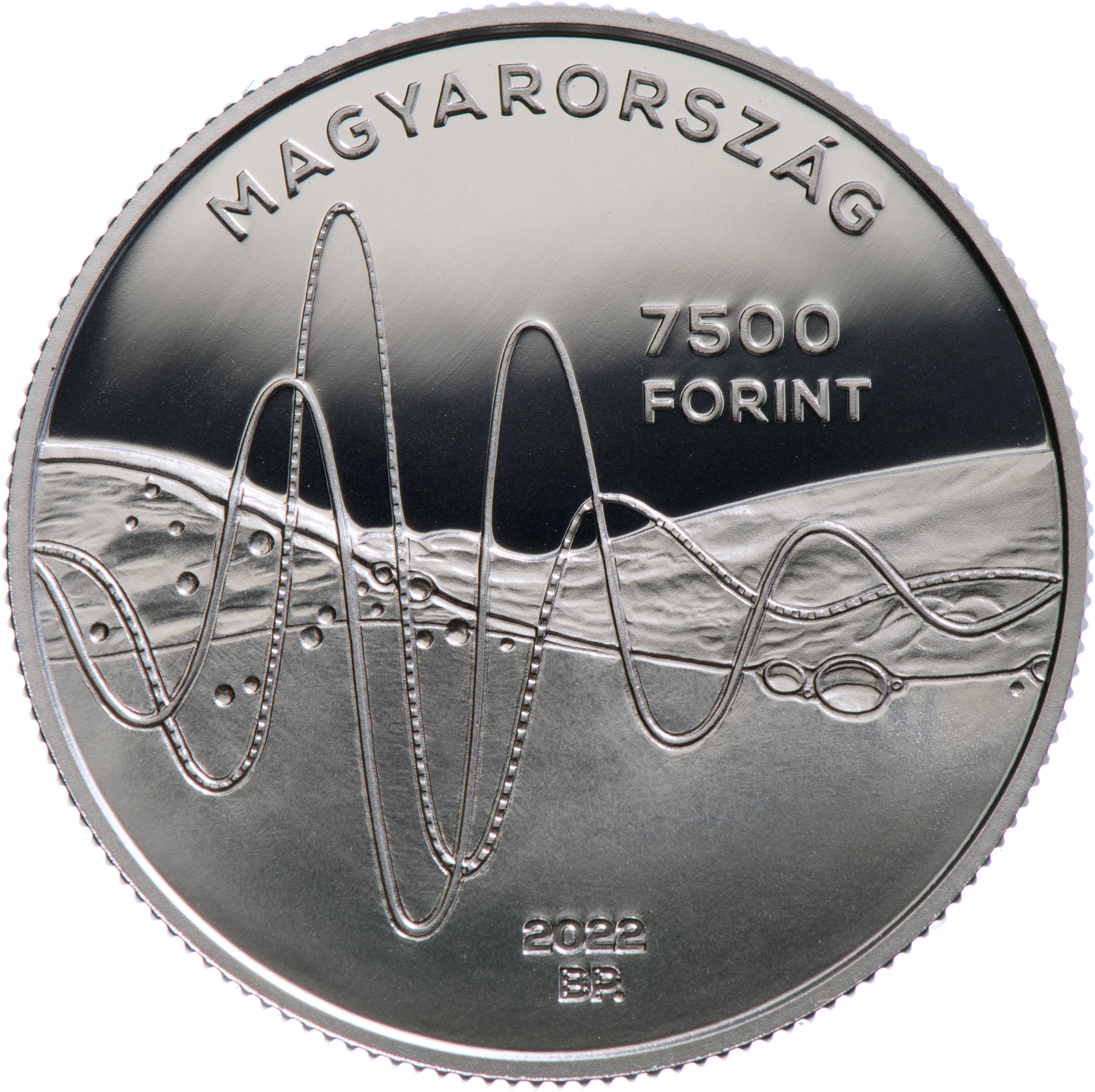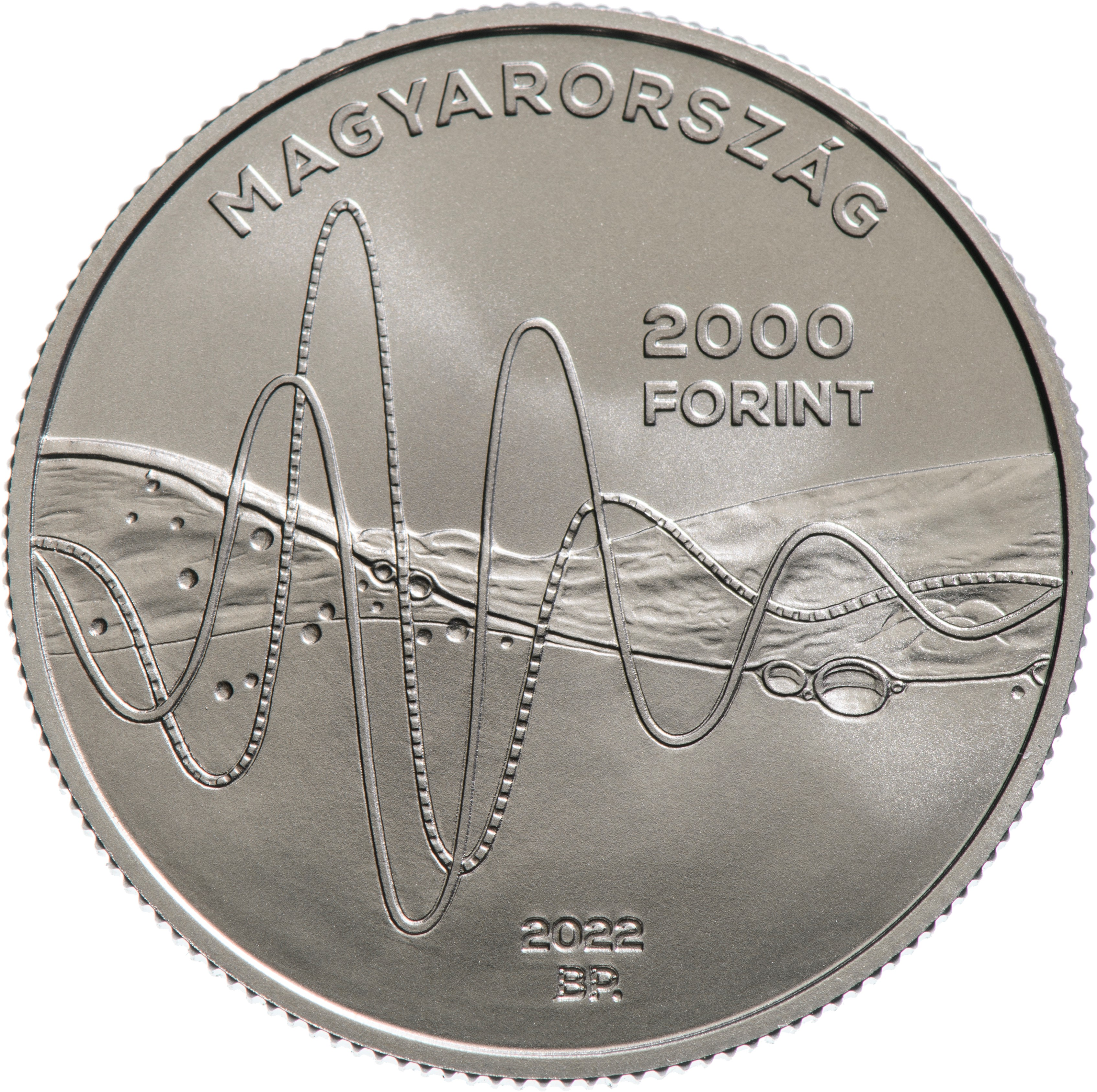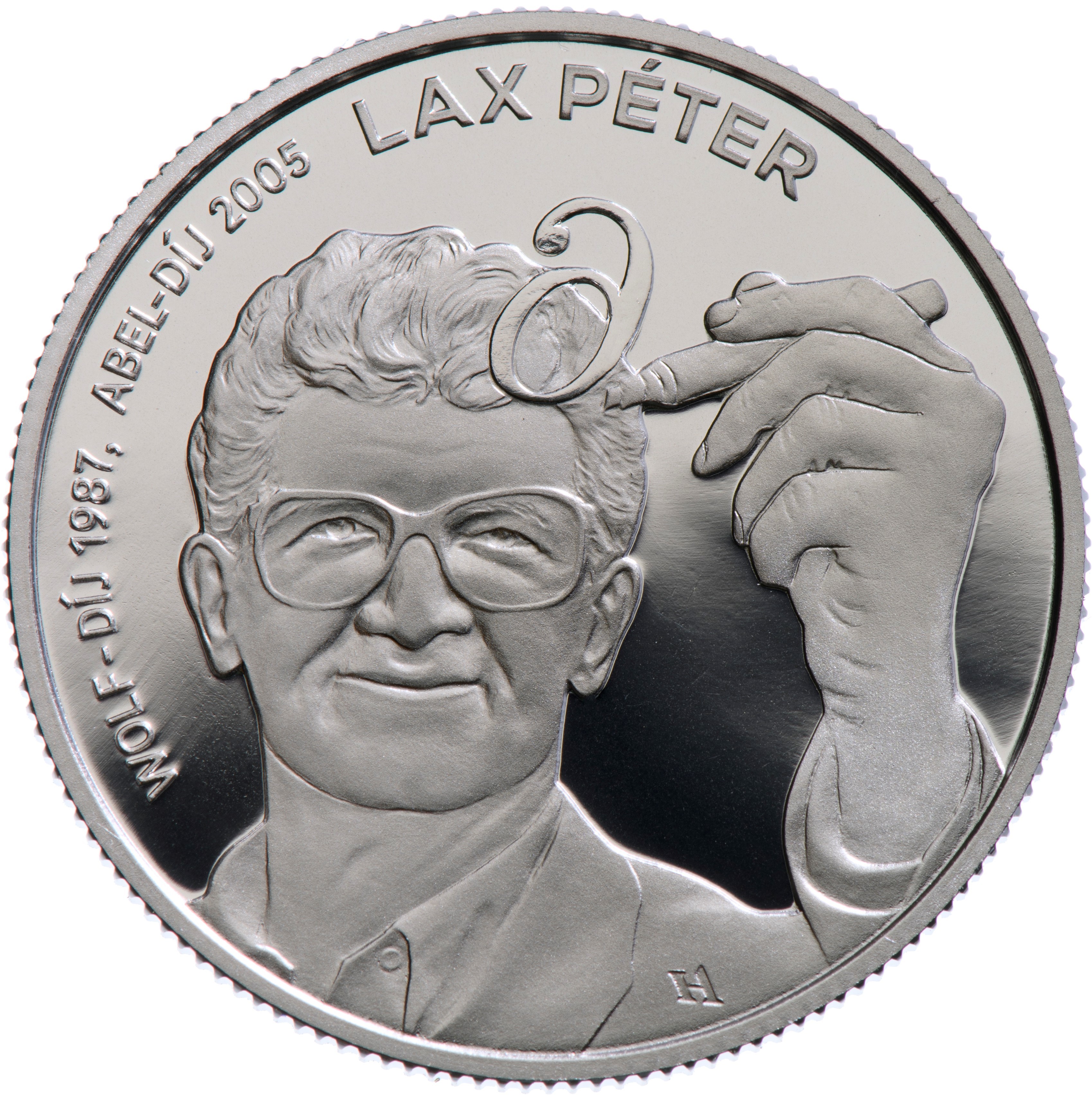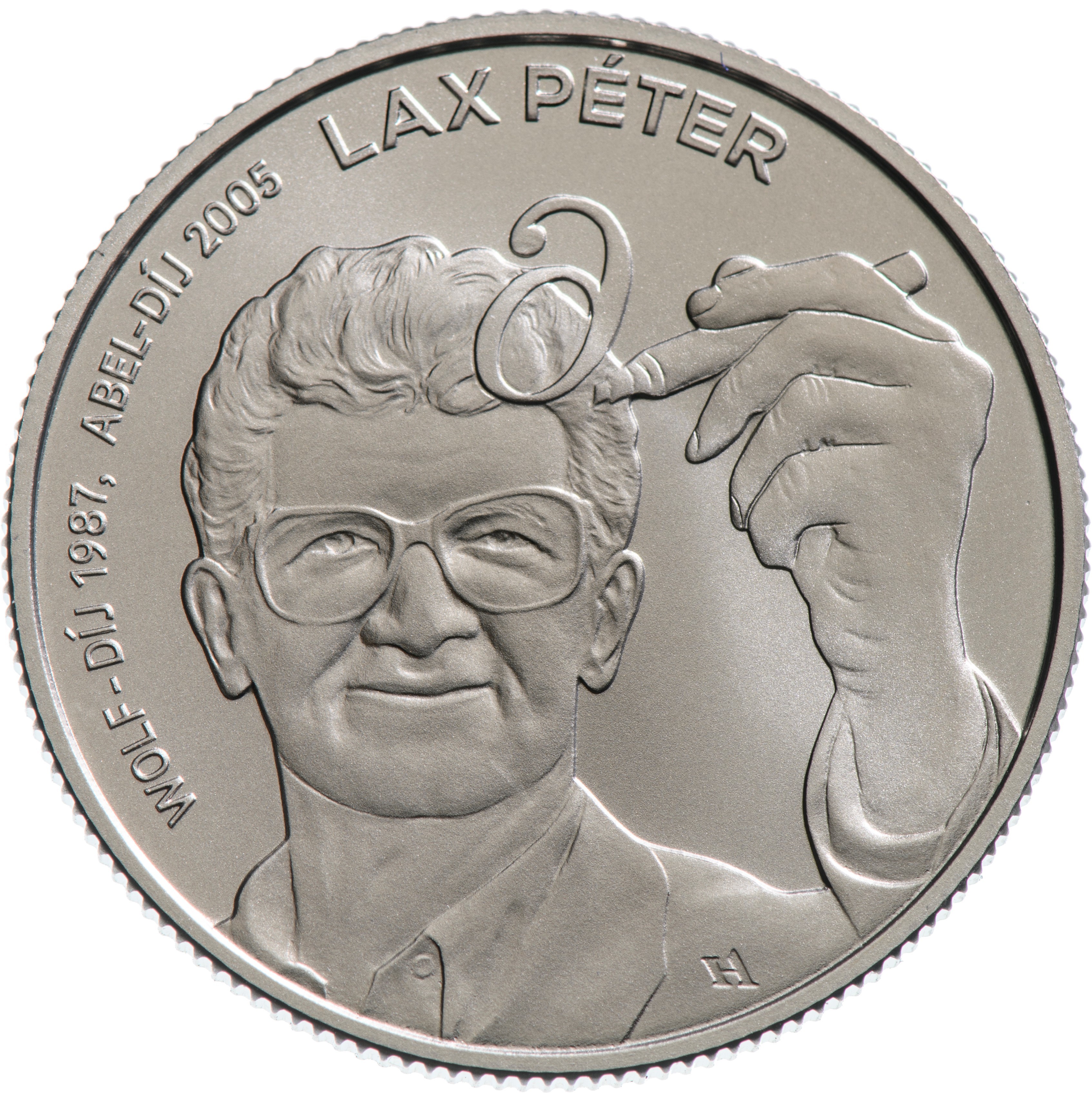The Magyar Nemzeti Bank will launch a new collector coin series to focus attention on Wolf Prize winner mathematicians of Hungarian origin and their work. The first piece in the series will present Péter Lax and his work, who received one of the most prestigious international recognitions in mathematics, the Wolf Prize in Mathematics. The silver collector coin with a face value of 7,500 forints and its non-ferrous metal version of 2,000 forints was designed by applied artist Andrea Horváth.
American mathematician Péter Lax of Hungarian descent was born in Budapest on 1 May 1926. The professor is primarily engaged in applied mathematics. From his areas of research, he focused on the theory of partial differential equations, the dynamics of fluids and computation theory. In 1987, he was awarded the Wolf Prize in Mathematics in recognition of his exceptional results achieved in the field of analysis and applied mathematics. In 2005, he received the Abel Prize, considered to be equal with the Nobel Prize itself, for his ground-breaking work in the application of differential equation theory in Information Technology.
Currently living in the USA, Péter Lax earned his diploma at the University of New York and worked there most of his life. Several mathematicians of Hungarian descent helped him in his youth including Gábor Szegő, Pál Erdős and John von Neumann. In this period, Neumann dedicated his full mental capacity to the development of the electronic computer and the establishment of effective numeric methods. All this might have had a significant effect on Péter Lax’s work who became a researcher of equations describing wavelike motion.
The primary role of the coins is to honour Péter Lax and to raise awareness with no role in cash circulation. The silver and non-ferrous metal coins have the same design, the only difference being their denominations.
On the obverse, referring to Péter Lax’s work in the coexistence of theoretical, applied and computer mathematics, curves imitating rippling water and the movement of waves are seen. On the edge of the obverse, at the top, in a circular legend the inscription ‘MAGYARORSZÁG’ (Hungary), and below, slightly to the right in two lines the denominations ‘7500’ or ‘2,000’ and the lettering ‘FORINT’ are shown. Aligned to the centre, in two lines, the mint year ‘2022’ and the mint mark ‘BP.’ are found.
The obverse of the ‘Lax Péter’ collector coins
|
Silver collector coin |
Non-ferrous metal collector coin |
On the reverse, a representation of Péter Lax is featured as he is writing on an imaginary blackboard. On the edge of the reverse, in a circular legend on the left, the lettering ‘WOLF-DÍJ 1987, ABEL-DÍJ 2005’ and at the top the inscription ‘PÉTER LAX’ are placed referring to his exceptional prizes in mathematics and the years they were awarded. At the bottom, the mathematical representation of a partial derivative is seen. On the edge of the reverse, at the bottom, inserted into the representation, the master mark of applied artist Andrea Horváth, who designed the coin.
The reverse of the ‘Lax Péter’ collector coins
|
Silver collector coin |
Non-ferrous metal collector coin |
Both collector coins have a diameter of 30 mm with a milled edge. The silver coin with a face value of 7,500 forint is struck in .925 fine silver and weighs 12.50 grams. The non-ferrous metal coin with a face value of 2,000 forint is produced from an alloy of copper (75%) and nickel (25%) and weighs 12.50 grams. 4,000 pieces can be made of the silver collector coin in proof finish and 4,000 pieces of the non-ferrous version in BU finish.
In order to promote the role of these collector coins to raise awareness as widely as possible, the silver coin ‘Lax Péter’ will be available for purchase for three months, while stocks last, and the non-ferrous version for one year from the date of issuance, at face value in the webshop (https://www.penzvero.hu/) and coin shop of Hungarian Mint Ltd. (Budapest, distr. V, 7 Báthory street), the producer and the distributor of the coins, starting from 2 May 2022.



